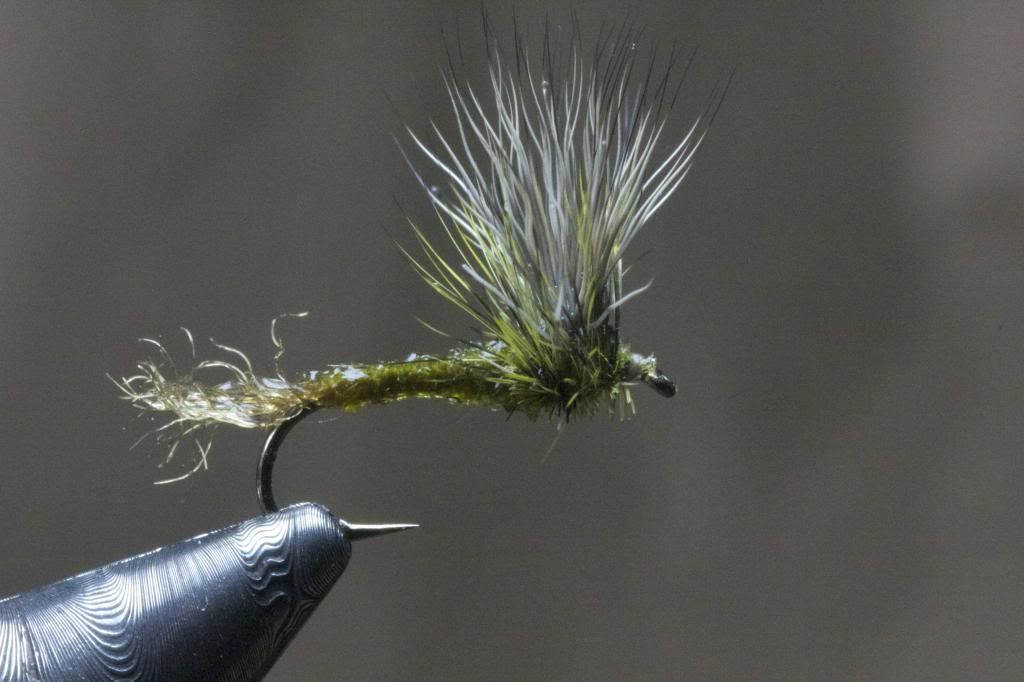LOL....Not sure. I've talked to them often. But in reality, if one ever talked back I would have to seek help.

LOL....Not sure. I've talked to them often. But in reality, if one ever talked back I would have to seek help.

Years ago, Dr. Loren Hill at the Univ. of Oklahoma, did a lot of study on fish and color. Hummingbird or someone came out with a device for bass fisherman to use on determine what color bait bass could see depending on clarity and depth of water. Resulted in some strange colored crank baits, etc. If I remember correctly fish have rod and cones in their eyes similar to what people have and have similar vision at least in part.
Want to hear God laugh? Tell him Your plans!!!

Byron, sorry that some folks seem to get sidetracked... I appreciated your question and it deserves an honest reply.
As far as your original question, yes, I do pay attention to materials regarding how they look in the water versus how they look in the water. I first noticed the problem when I began tying scud patterns for my favorite spring creek. I purchased what looked like just the right color dubbing that I would need and then discovered it would turn almost black when wet. This was for an olive pattern. I then began paying closer attention and even started blending some of my own colors. Most of the dry fly dubbing materials that promote themselves as waterproof, usually maintain their colors. But many of the more coarse dubbings for nymphs and such tend to go a bit darker. The few exceptions I have found have been those from Dave Whitlock and Arizona Dubbing.
I tie a scud with Krystal Flash as a ribbing and I like to demonstrate how the rib adds life to the scud when wet, so I usually put it in my mouth and show off the colors that way when demo tying. (I'm sure someone will go off on the dangers of putting such things in my mouth...- too bad, I still do it
)
On the other hand, I have found that a generic dark-colored mayfly nymph usually works better than any specific color. I let the fish choose.
Kelly.
Tight Lines,
Kelly.
"There will be days when the fishing is better than one's most optimistic forecast, others when it is far worse. Either is a gain over just staying home."
Roderick Haig-Brown, "Fisherman's Spring"
Subtle contrast seems to be lost quite a bit when things get wet. It might look awesome in the vise, but will your extra details make a difference in the water? I think it pays to step up the contrast a notch or two as well, if it is truly intended to be a critical part of the fly.
The Green Hornet strikes again!!!

In line with my point. As an example, I was asked to see my Flav pattern on the river a week or two ago as I was hooking quite a few fish. The fly was in the hook keeper and had dried out. The angler said, "that's not dark enough". I told him it would be when wet.

I've always followed the 'size, shape, color' mantra as a guide for tying flies in decreasing importance. Does color matter? To me, yes, but less so than size and shape. To the fish? who knows for sure but nature wouldn't have such an array of insect colors if it didn't. I don't throw an orange Stimulator if golden stones are out but I do when the October caddis hatch is on. This past week I couldn't buy a fish if it wasn't tied in cinnamon caddis. Go figure.
Do I account for color change when the fly is wet? Not usually, but it is an interesting question.

I don't. Know I probably should.

We should probably also be considering the color of the fly at the depth it will be fished. Different Colors of light get filtered out as the depth is increases. A fly at 3ft deep could look quite different than if it's just dunked in a glass of water.

Jay,
True. My original post was intended for dry flies, but, obviously, the same is true for sub-surface presentations.
Great point.
Perhaps not the best example, but an example:
Dry:
Wet:

Last edited by Byron haugh; 07-16-2013 at 06:11 PM.

I'm a big fan of the "halo" effect. Light materials over dark...fuzzy outlines on fly bodies. I think it adds a bit of life to a fly that floats along without much movement. Wet fly, nymph, dry fly, streamer it works for me.
"As far down the river as he could see, the trout were rising, making circles on the surface of the water, as though it were starting to rain."- E.H., The Big Two Hearted River